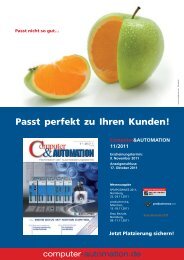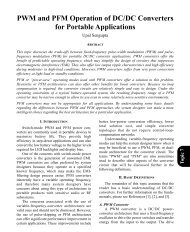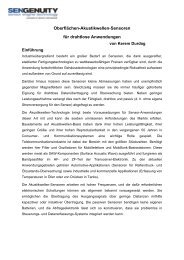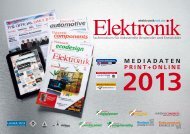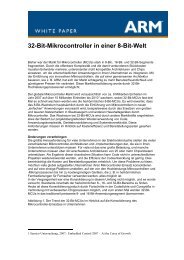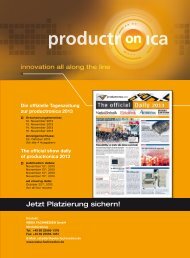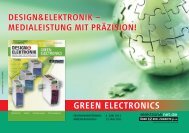Power Factor Correction Demystified - Energie & Technik
Power Factor Correction Demystified - Energie & Technik
Power Factor Correction Demystified - Energie & Technik
Create successful ePaper yourself
Turn your PDF publications into a flip-book with our unique Google optimized e-Paper software.
www.microchip.com<br />
Conclusion and Experimental Results<br />
The experimental results shown in Figure 5 validate the digital implementation of PFC using<br />
a dsPIC ® DSC. The yellow waveform is the input current and the blue waveform is the input<br />
voltage. This shows that the input current is shaped according to the voltage, resulting in a<br />
near-unity power factor. Implementation of PFC enables substantial cost savings for power<br />
quality, depending upon the pricing structure provided for the consumer. PFC can also<br />
reduce losses for utility companies.<br />
Summary<br />
Figure 5:<br />
Input Current and Input Voltage Waveforms with PFC<br />
PFC is no longer a choice—it has become a requirement for most power-conversion<br />
applications. In this article, we have seen some fundamental concepts governing power<br />
quality and the issues faced in distribution systems if PFC is not implemented. The digital<br />
implementation of PFC proves to be advantageous over analog implementations because it<br />
enables precise control of performance and the ability to merge and integrate many control<br />
schemes in integrated applications. The advent of DSCs with application-specific peripherals<br />
on-chip has made the digital implementation for complex applications with PFC possible for<br />
today’s and tomorrow’s world of power.<br />
###



